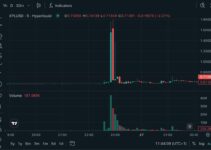You can lend or borrow cryptocurrency on a DeFi platform and earn cryptocurrency in exchange for your services. More complex strategies, however, can be used to increase yield output. One such yield-increasing technique is looping. In DeFi, looping is the process of repeatedly supplying and borrowing the same assets and then repeatedly resupplying the borrowed assets (until your returns begin to diminish) to increase your annual percentage rate (APR) and annual percentage yield (APY).

Why Should You Loop?
Looping in DeFi can look different on distinct platforms. However, the operational metrics are fundamentally similar.
Several platforms with yield farming enable investors to deposit their crypto assets into supply markets and earn interest. Furthermore, these platforms demand that investors who want to borrow assets provide collateral to the supply market. This means that both lenders and borrowers are lending their assets. It also implies that tokens can be used as collateral for borrowing after staking.
Some platforms incentivize lending and borrowing by providing users with their native tokens. When borrowing ETH, for example, you may need to pay interest in ETH, but you may also receive JST rewards that more than offset the interest and result in a net positive APY.
As a result, you can supply ETH, borrow ETH with it as collateral, and earn a positive APY on BOTH SIDES of the lending market. Furthermore, because you are borrowing the same asset you are providing, the locked total value (LTV) remains constant, lowering the risk of liquidation. As a result, you can redeposit all borrowed ETH without fear of liquidation.
The only risk of liquidation is if you fail to claim a portion of this platform’s lending rewards in the form of a bonus token (such as the JST mentioned above) and convert it back to the borrowed asset (ETH in this case) and redeposit it frequently.
How Do You Loop in DeFi?
After borrowing an asset, you return it to the protocol to earn additional lending APY. This is a leverage loop, which you can repeat eight to thirteen times before the returns begin to decline in relation to the efforts.
However, looping leverage is only profitable when the supply APY exceeds the borrow APY. You must also ensure that your borrowing is less than the liquidation threshold. If the liquidation threshold is 80%, for example, use leverage between 65 and 75%.
To become lenders, investors must deposit their coins into DeFi-based smart contracts. In exchange, they will receive newly minted protocol-specific tokens (JST for JustLend, XVS for Venus, and SLND for Solend). These redeemable tokens represent principal and interest payments. The exchange rate between native and deposited tokens is embedded in the APY, the interest rate determined by the supply ratio to borrowed tokens in a given market.
The coins deposited will become collateral for loans. Two factors determine the borrowing limit. The first is the amount deposited by lenders into the protocol’s funding pool. The quality of the coins used as collateral is the second factor to consider.
The higher the collateral, the higher the loan. For example, if the collateral factor for FIL is 70% and the borrower provides 100 FIL as collateral, the borrower may borrow up to 70 FIL in cryptocurrency. The protocol will liquidate the collateral to repay the loan if the limit is exceeded.
To exit the market, gradually withdraw the collateral (0.1 out of $100) to pay off the loans. Continue this cycle until the loan is completely repaid. You should then withdraw the remaining collateral.
Yield Farming Risks
The yield farming process is complex, putting both borrowers and lenders at risk. Users are more vulnerable to temporary losses and price fluctuations when markets are volatile.
Liquidity providers may suffer temporary losses during periods of high volatility. This happens when the price of a token in a liquidity pool fluctuates, causing the pool’s token ratio to change to stabilize its total value. However, the loss only occurs if the network withdraws the pool’s liquidity. Smart contract and liquidation risks, rug pulls, and other exit scams are all significant risks that come with yield farming.
Loop to Earn More
Undoubtedly, DeFi money markets can contribute to developing a more accessible and open financial system that anyone can access. Yield farmers are rewarded for contributing liquidity to a platform. However, interest and fees vary according to capital growth and the strategies used.
This article has reviewed a yield-increasing strategy: looping. This strategy will help farmers maximize their return on investment and earn additional incentives. What else can this revolution in financial decentralization bring?
Personal Note From MEXC Team
Check out our MEXC trading page and find out what we have to offer! You can learn more about crypto industry news. There are also a ton of interesting articles to get you up to speed with the crypto world. Happy trading!
Join MEXC and Get up to $10,000 Bonus!
Sign Up


